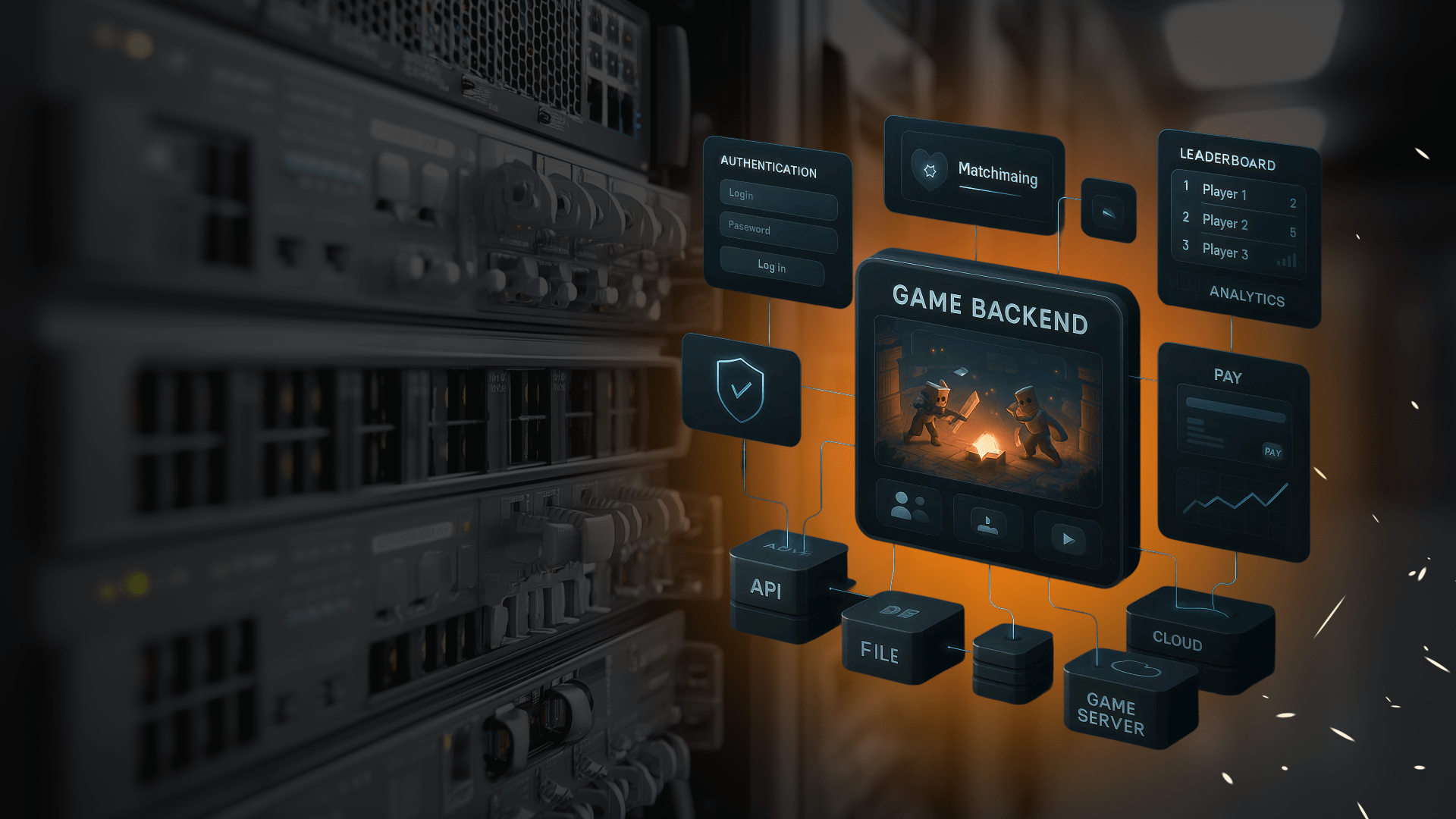HTML5 game development makes gaming simpler and more accessible by running directly in web browsers, no downloads or plugins required. These games work seamlessly across devices, from smartphones to desktops. This guide breaks down:
- Market Overview
- Target Audience Insights
- Benefits of HTML5 Game Development.
- Development Challenges
- Cost Estimates
- Development Timelines
- Integration with Platforms
- Cost of Casino Game App on HTML5
- Development Pipeline
- Game Engines & Frameworks
- Performance Optimization
- Monetization Models.
- Marketing & Community Engagement.
Whether you’re a business owner exploring new revenue streams or a brand looking to boost user engagement, understanding HTML5 game development can help you assess its profit potential and how it fits into your business strategy.
Browser Games Market: Key Statistics
Market Size and Revenue
The HTML5 gaming market is expected to reach $3.09 billion by 2028, up from $1.03 billion in 2021, indicating vast untapped potential for game developers.
Growth Rate
The market is expected to grow at a CAGR of 11.89% from 2024 to 2033, fueled by casual gaming demand and advancements in HTML5 technology.
Understanding HTML5 Gamers: Insights into Target Audience
The HTML5 gaming market is not only growing but also attracting a diverse and highly engaged audience. Developers aiming to create successful browser-based games need to understand their target players, what motivates them, how they engage with games, and what keeps them coming back.
According to a recent report by Google, H5 gamers span across different age groups, genders, and gaming preferences. They include both casual players seeking quick entertainment and dedicated gamers who engage with browser games more seriously. The report highlights that tapping into this audience requires thoughtful game design and strategic monetization with well-placed advertising.
For an in-depth look at the behavior, preferences, and monetization opportunities of H5 gamers, check out the full report here: 👉 Scoring with H5 Gamers by Google
What Is an HTML5 Game?
An HTML5 game is a game developed using HTML5, JavaScript, and CSS. These games rely on technologies like WebGL and the Canvas API to deliver high-quality graphics and smooth gameplay. Examples of HTML5 games range from simple puzzles to complex multiplayer experiences.
Key Features of HTML5 Games:
- No installation required – play directly in a browser.
- Works across multiple devices (PC, mobile, tablet).
- Single codebase – allows developers to write once and deploy across all platforms.
- Fast loading times with minimal resources.
- Supports both 2D and 3D graphics.
- Ideal for online and social gaming platforms.
Project Timeline in HTML5 Game Development
Clients looking to develop an HTML5 game often ask, “How long does it take?” The answer depends on project complexity, features, and team size.
Average Development Timelines:
| Game Type | Development Time |
| Simple puzzle game | 2-3 months |
| Mid-level arcade or strategy game Advanced games | 3-6 months |
| Advanced games | 7+ months |
Cost Ranges for HTML5 Game Creation
- Basic HTML5 game: $15,000 – $25,000
- Mid-tier HTML5 game: $25,000 – $70,000
- Advanced Games: $70,000 – $150,000+
A professional HTML5 game development company provides detailed cost estimates, helping businesses align project scope with budgets. Contact us to get a detailed quote.
Integration with Platforms: Expanding Your Game’s Reach
One of the biggest advantages of HTML5 games is their versatility and adaptability. They can be embedded into websites, mobile apps, and social media platforms to drive engagement.
How Can HTML5 Games Be Integrated?
- Websites & Landing Pages: Engage users directly on business sites
- Social Media (Facebook, Instagram): Increase viral reach and brand awareness
- Mobile Apps (iOS & Android): Hybrid HTML5 games run inside apps using WebView
- Gaming Portals: Publish games on popular HTML5 gaming platforms
- Standalone Applications: HTML5 games can be packaged into standalone apps with installers, allowing them to function like native desktop or mobile games.
For example, companies like Facebook Instant Games and Google Play Instant allow HTML5 games to be played without full app downloads, boosting user acquisition.
💡Many brands use HTML5 mini-games as marketing tools, embedding them in campaigns for increased engagement.
Why Choose HTML5 for Game Development?
HTML5 games are gaining popularity due to their flexibility and accessibility. Here’s why developers and businesses choose HTML5 games development over traditional platforms:
- Cross-Platform Compatibility: Works seamlessly on all devices.
- Cost-Effective: Reduces development costs compared to native apps.
- Instant Playability: Users can play immediately without downloads.
- SEO and Discoverability: Easy to promote and share online.
- Seamless Integration: Embed games into websites, apps, and social media campaigns to enhance user interaction.
“One of the biggest strengths of HTML5 games is how frictionless they are. No downloads, no app store approvals, just click a link and you’re in. That’s a game-changer for engagement and retention. You don’t lose users to install fatigue, which is a huge problem in mobile gaming.
Another big win is the cross-platform nature of HTML5. Instead of maintaining separate codebases for iOS, Android, and web, you write it once and deploy everywhere. That cuts dev time and costs significantly, which is a major factor for businesses looking at ROI.” – Pavlo Ratushnyi, Head of Development at TWG
Development Pipeline for HTML5 Game
1. Pre-Production
Game Design Document (GDD) & Market Research
Before starting development, conducting market research and creating a Game Design Document (GDD) ensures the project aligns with industry trends and player expectations.
Market & Competitor Analysis:
- Identify successful HTML5 games in your niche.
- Study player behavior, retention, and monetization trends.
- Analyze competitor strengths and weaknesses to position your game effectively.
Player Demographics & Preferences:
- Define target audience age groups and regions.
- Use surveys and forums to gather real player feedback.
Refined GDD Structure:
- Clearly define game mechanics, narrative, UI/UX flow, and monetization strategies.
- Outline potential expansion plans (e.g., multiplayer, live events).
Tech Feasibility & Prototyping
Before full-scale development, technical prototyping helps validate ideas and minimize development risks.
Scalability Considerations:
- Plan for scalable infrastructure for high-traffic multiplayer games.
- Evaluate whether microservices or a monolithic backend is best.
AI & Procedural Content Generation:
- Explore AI-driven content (dynamic level generation, adaptive difficulty).
- Use procedural generation to reduce asset size and increase replayability.
Prototyping Tools:
- Rapid clickable wireframes for UI/UX validation.
- Code prototypes with PixiJS, Three.js, React, React-pixi, Spine to test rendering performance.
2. Production
Core Development
The core development phase includes framework selection, modular architecture, and performance optimizations.
Edge Computing & Serverless Functions
- Offload intensive tasks using AWS Lambda or Firebase Functions for multiplayer.
Advanced Data Compression Techniques
- Implement Brotli/Gzip for asset compression to reduce network load.
Expanded Modular Architecture:
- Break down core game components into reusable ES6 modules.
- Use service workers for caching and faster asset delivery.
Art & Asset Integration
Optimizing game assets ensures fast load times and smooth performance.
Optimized 3D Assets (if applicable)
- Use gLTF format for lightweight 3D models.
- Implement Level of Detail (LoD) techniques to reduce rendering load.
Lazy Loading for Efficient Asset Management
- Load only the required assets per level instead of preloading everything.
3. Testing & Quality Assurance
Expanded QA Process
Testing isn’t just about bug fixes, it’s about ensuring a smooth and engaging player experience. Use BrowserStack or LambdaTest to validate basic layouts, menus, and event flows across multiple devices. However, these platforms are not suitable for testing graphically intensive games, complex animations, or advanced gameplay mechanics.
Beta Testing & Community Feedback
- Launch a beta version for selected players.
- Gather insights from forums, Discord, or in-game surveys to refine gameplay.
AI-Based Automated Testing
- Use AI-powered automation to detect UI glitches and gameplay inconsistencies.
4. Deployment & Post-Launch Strategies
Cross-Platform Integration & Marketing
A game’s success doesn’t just depend on how well it’s built—it also needs strategic distribution across multiple channels.
Cross-Platform Integration:
- Seamlessly integrate games into social media platforms, gaming portals, and hybrid mobile apps.
- Ensure smooth WebView embedding for app-based play.
Community-Building & Engagement:
- Use Discord servers, community forums, and social media groups to foster an active player base.
- Run live events, tournaments, or limited-time challenges to retain players.
Live Ops & Dynamic Content Updates:
- Implement a seasonal event system (e.g., new challenges every month).
- Provide real-time push notifications and in-game alerts to re-engage users.
HTML5 Game Developers: Skills and Expertise
A professional HTML5 game developer must be proficient in:
- JavaScript (ES6/TS): Core scripting language for interactivity.
- WebGL and Canvas API: Deep understanding of the rendering system, including kernel operations, shader programming, and performance optimizations.
- Game Physics and Animations: Using libraries like Matter.js.
- Backend Development: If multiplayer, knowledge of Node.js is beneficial.
- Mobile Optimization: Ensuring smooth performance on touch devices.
Best HTML5 Game Frameworks and Engines
Choosing the right HTML5 game framework is crucial. Here are some top choices:
How HTML5 Games Get 10/10 in Performance and Engagement
Achieving high performance and engagement in HTML5 games is essential for maximizing user retention and revenue generation. Optimizing asset loading through lazy loading ensures faster game launches by loading only necessary resources at each stage. Writing efficient code helps minimize memory leaks and improves performance across different devices. Reducing draw calls lowers the number of rendered objects per frame, enabling smoother gameplay even on low-end devices.
Designing a mobile-friendly UI with responsive layouts and touch-friendly controls guarantees a consistent experience on smartphones and tablets. Additionally, adaptive performance tuning adjusts graphics quality based on device capabilities, ensuring the best possible experience for every player. These techniques help businesses create engaging HTML5 games that perform reliably across platforms while driving user satisfaction and revenue growth.
Monetizing HTML5 Games: Business Models That Work
HTML5 games can generate revenue through several proven models. The right approach depends on your game type, target audience, and business goals. Here are the most effective options:
1. In-Game Advertisements
- Banner Ads – Small static ads shown during gameplay without disrupting the experience.
- Interstitial Ads – Full-screen ads displayed between game levels or on game launch.
- Rewarded Videos – Players watch ads voluntarily to receive in-game rewards like extra lives or power-ups (high engagement and revenue potential).
2. In-App Purchases
- Sell virtual items, cosmetic upgrades, or extra game features directly within the game.
- Works best for games with progression systems or competitive mechanics.
3. Subscriptions
- Offer ad-free gameplay, premium content, or exclusive levels for a recurring monthly or yearly fee.
- Suitable for games with long-term engagement potential.
4. Sponsorship Deals
- Collaborate with brands or gaming platforms to feature their content or create branded mini-games.
- Popular for marketing campaigns and promotional games.
Conclusion: Why Invest in HTML5 Game Development?
HTML5 game development is a powerful solution for businesses looking to create engaging, cross-platform experiences. Whether you are a startup, a game publisher, or an enterprise, investing in HTML5 game development services can help you reach a broader audience and maximize revenue potential.
Looking to develop your own HTML5 game? Twin Win Games offers expert HTML5 game development services tailored to your needs. Contact us today to bring your game idea to life!
FAQs About HTML5 Game Development
1. What are HTML5 games?
HTML5 games are browser-based games that run without plugins using HTML5, JavaScript, and CSS.
2. What is the best HTML5 game engine?
PIXI is one of the most popular HTML5 game engines due to its flexibility and ease of use.
3. Can HTML5 games work on mobile devices?
Yes, HTML5 games are mobile-friendly and can run on smartphones and tablets.
4. How do HTML5 games make money?
Through ads, in-game purchases, subscriptions, and sponsorships.
5. What services does an HTML5 game development company offer?
Design, development, testing, deployment, and monetization strategies.
6. Why should I choose Twin Win Games for HTML5 development?
We provide HTML5 game development, modern and up-to-date graphics and engaging gameplay mechanics.





